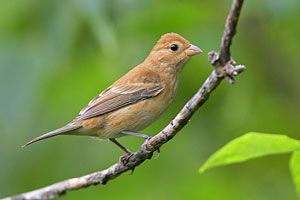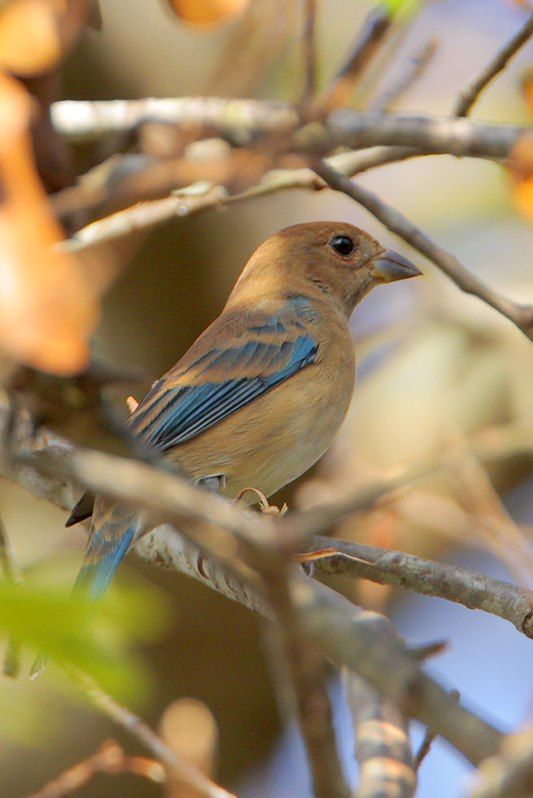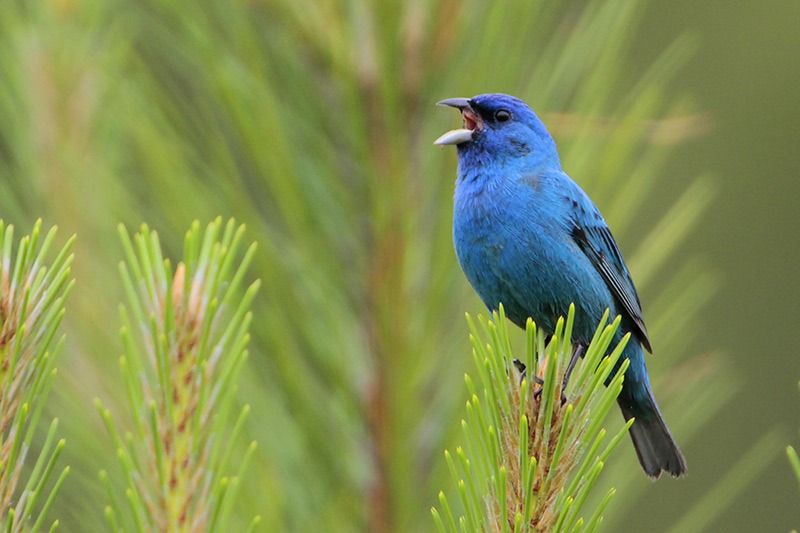Indigo Bunting

© Wayne Wendel
Passerina cyanea
Family: (Cardinalidae) Cardinals, Tanagers and Buntings
Preferred Habitat: Woodlands and brushy fields.
Seasonal Occurrence: Common spring and fall. Occasional in winter
Notes by Susan Billetdeaux: The Indigo Bunting is particularly common in our area in the spring. Males are readily identified by their dark blue plumage. Females are a soft brown with blue patches on the tail. Buntings along with Tanagers display complex molting patterns. In the fall male adult Indigo Buntings resemble females. Varying degrees of blueness may be observed. Indigo Buntings are sometimes seen feeding on lawns and make use of bird feeders.

© Greg Lavaty
Profile by Aidan Healey: (Written April 4, 2020) Feeling blue because you’ve been staying inside all the time recently? You’re not alone! Indigo Buntings spend all of their time outside, and they’re quite blue too.
Indigo Buntings are in the same family as Cardinals and Grosbeaks – a group that includes many vibrantly colored species. However, Indigo Buntings are easy to recognize because their vibrant blue coloring stands out against almost any leafy background.
Adult male Indigo Buntings are deep blue all over, and their habit of perching on the exposed tips of branches also makes them very conspicuous when singing. Female Indigo Buntings are mostly brown at first glance, but they have blue patches in their wings and tail that make them easy to spot in flight.
Indigo Buntings are just now beginning their journey northward across the United States, so keep watch in your backyard and perhaps one will stop by.
-
Cornell Lab of Ornithology
-
Macaulay Library

© Greg Lavaty, www.texastargetbirds.com

© Greg Lavaty, www.texastargetbirds.com

© Greg Lavaty, www.texastargetbirds.com





















